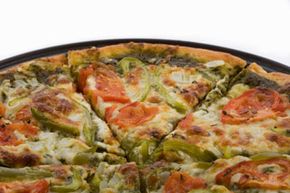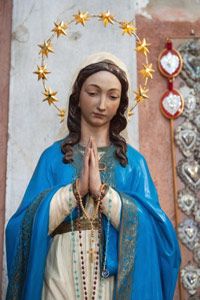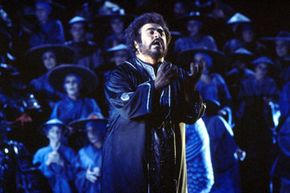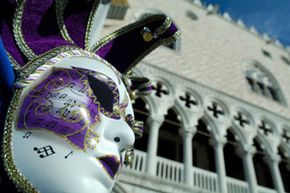We can't discuss Italian traditions without talking about food. It's an essential part of Italian life, and may be the one Italian tradition that non-Italians know best. The most well-known Italian dishes are pasta and pizza, but Italian cuisine varies tremendously from one region to another. The popular Italian-American dishes generally hail from the southern region of Campania and the island of Sicily, just off the southern coast. Indeed, most Italians will tell you that Italy isn't a monoculture, and Italians are often as proud of their regional heritage as they are of their nation as a whole.
Italian cuisine is based on peasant traditions and thus relies on inexpensive, locally available foods to a great extent. The Italian populace has historically been quite poor and had to rely on locally available foods to create their recipes [source: Primerano]. This is why many Italian dishes are based on simple ingredients like cheese, pasta, eggplant, olives and olive oil, as well as other items that Italians could make themselves or procure inexpensively. Generally speaking, Italian cuisine is all about using quality ingredients well, rather than cooking technique. (Contrast this with French cuisine, which heavily emphasizes technique.)
Regional cuisines are affected by climate, geography and history. For example, Slavic dishes and sausages are popular in the northeastern region of Friuli-Venezia Giulia, which was partially held by the Austrian-Hungarian Empire. The food of Tuscany reflects a history of peasant fare; the area is famous for minestrone, essentially a soup made from leftovers and inexpensive vegetables. Many parts of Italy have sea coasts, so seafood is a much more important part of Italian cooking traditions than most people realize. Sardinia and Sicily are regions known for using lobster, swordfish, cod, sardines and cuttlefish in recipes.
Family plays a central role in Italian traditions, and a large family meal is customary in Italian households. The meals are relaxed affairs with several courses (in which we'll talk about in detail when we talk about special events). The goal of the meal isn't just to eat -- it's time for the family members to converse and enjoy each other's company, and may take hours.
Because the climate is perfect for growing grapes, Italy is famous for its wine. Italy and France are the leading wine-producing nations in the world [source: Wine Institute]. Like Italian food, Italian wines vary by region, and they are known for going perfectly with Italian meals.
Next, we'll discuss the influence of Catholicism on Italian traditions.



